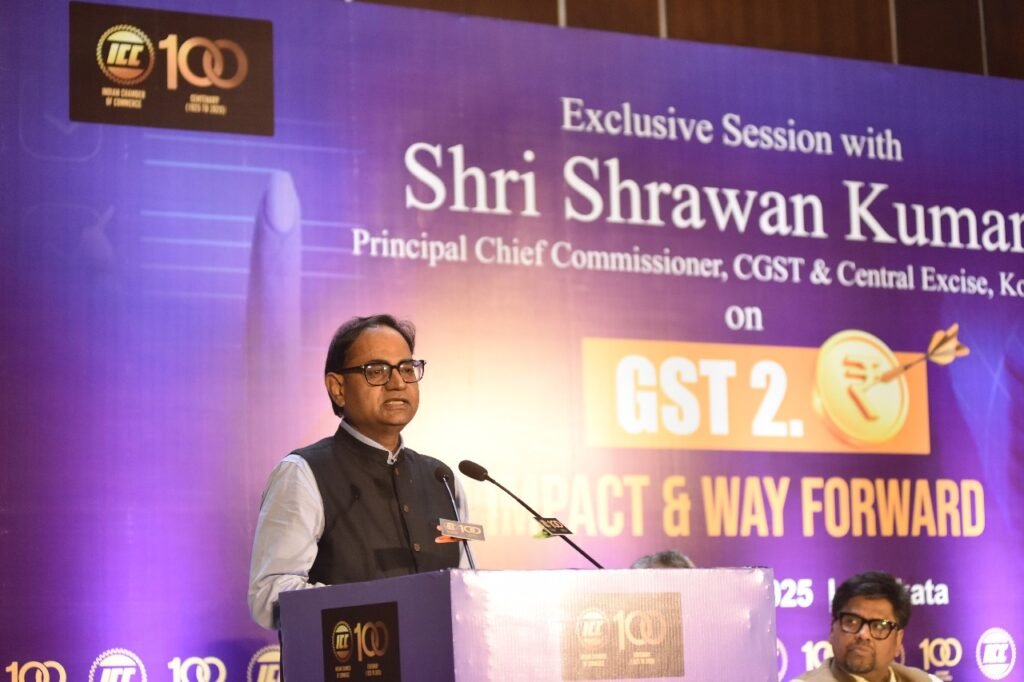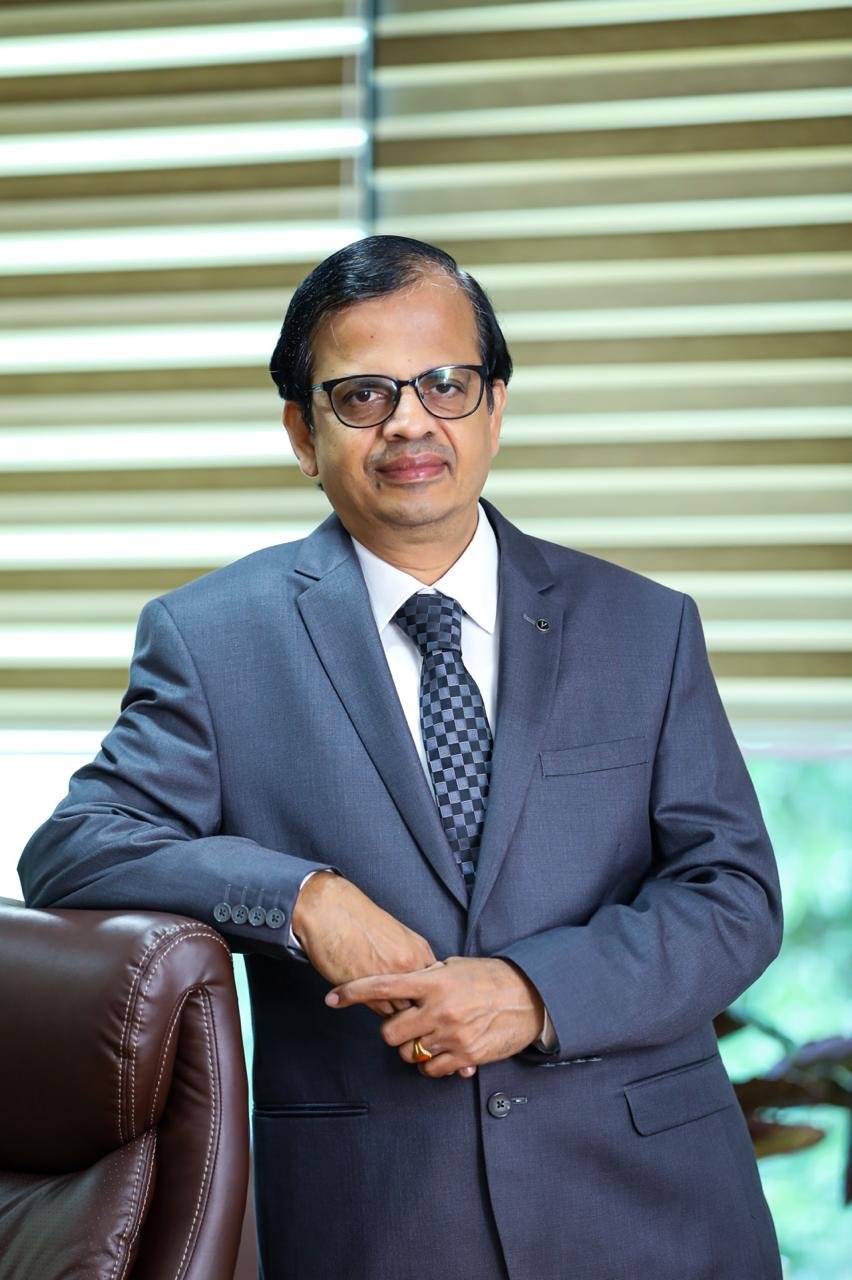Kolkata, November 8, 2025: The much-awaited GST Appellate Tribunal will begin functioning in Kolkata and other locations from December 1, 2025, marking a major milestone in the implementation of GST 2.0 reforms. Announcing this, Shrawan Kumar, Principal Chief Commissioner, CGST & Central Excise, said that the new phase of GST is designed to make India’s indirect tax system more transparent, efficient, and business-friendly. He also informed that West Bengal has witnessed a 14% growth in GST revenue this financial year, reflecting strong compliance and economic resilience.
Addressing a special session on “GST 2.0: Impact & Way Forward” organised by the Indian Chamber of Commerce (ICC), Mr Kumar said the revised GST rates will start appearing on product price tags within the next 20 to 30 days, a matter currently concerning many consumers. The session was attended by Vikram Prakash Wani, Commissioner, Kolkata North; Pravin Kumar Agrawal, Commissioner, Audit–I Kolkata; Brij Bhushan Agarwal, President, ICC and CMD, Shyam Metalics & Energy Ltd; and Dr. Rajeev Singh, Director General, ICC.
Kumar traced GST’s evolution since its 2017 launch, noting that 56 GST Council meetings have been held so far, each strengthening the system. The 2024 Union Budget introduced four key amendments—retrospective relaxation under Section 16(5) on input tax credit, an amnesty for 2017–2020 notices under Section 73, a new Section 11A allowing retrospective exemptions, and Section 74A standardising the time limit for show-cause notices to 3.5 years.

Post the September 3, 2024 reforms, GST 2.0 brought changes across rate restructuring, process reforms, and rate reductions. Tax slabs have been simplified to mainly 5% and 18%, eliminating the 12% and 28% rates. Healthcare, pharmaceuticals, hospital rooms, gyms, salons, and fitness centres now attract only 5% GST, while the insurance sector has been fully exempted. Sectors like agriculture, construction, food, jute, leather, handicrafts, footwear, and cement—whose rate fell from 28% to 18%—stand to gain. Only luxury and sin goods such as tobacco, alcohol, gaming, and casinos remain taxed at 40%.
Kumar said these measures aim to address inverted duty structures, improve cash flows, and boost consumption. Monthly GST revenues have risen from ₹80,000 crore in 2017 to around ₹2 lakh crore, with the RBI and IMF revising India’s GDP projection upward from 6.5% to 6.8%. Nationally, GST collections grew 9% in September and 4.6% in October over the previous year.
Brij Bhushan Agarwal said GST has unified India’s fragmented indirect tax system, enhancing the ease of doing business. Calling GST 2.0 “a substantial phase of reform,” he said it will simplify administration, improve governance, and strengthen compliance through technology. He highlighted improvements such as pre-filled returns, faster refunds, and streamlined registration—particularly beneficial for MSMEs and exporters. October’s collections of ₹1.95 lakh crore show strong market activity, he added.
Dr. Rajeev Singh, Director General, ICC, said India’s reform-driven growth highlights transparency, simplification, and alignment between government and industry. Effective leadership and consistent implementation have ensured a more business-friendly environment, reinforcing confidence in India’s long-term growth trajectory.



